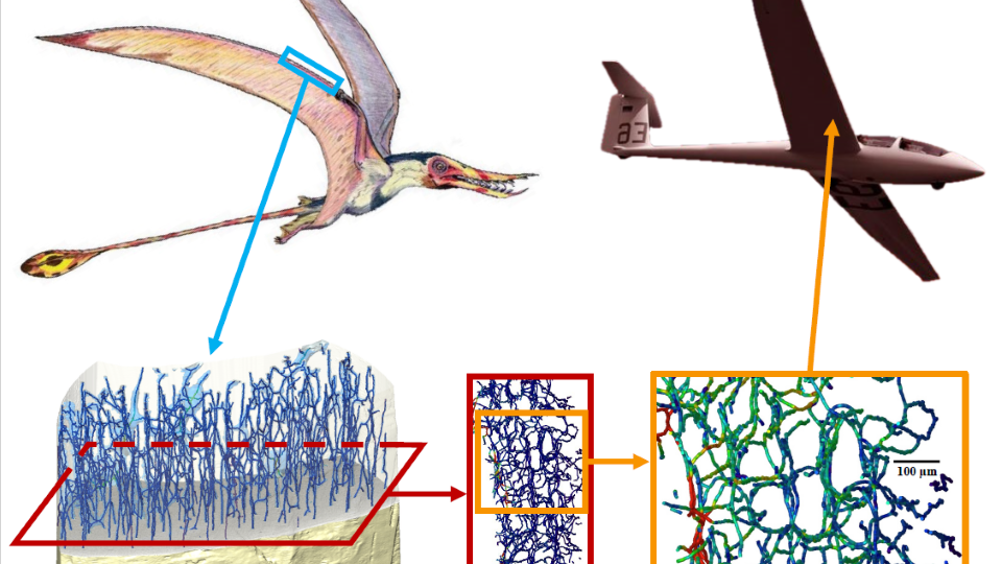Fossilised Pterosaur bones offer insights into new materials
The microarchitecture of fossil pterosaur bones could be replicated to develop materials for the next generation of aircraft, new research from Manchester University has found.

Scientists at the university used advanced X-ray imaging techniques to examine fossilised bones of the prehistoric flying reptile to reveal details of its structure that have not been seen before.
Early pterosaurs typically had wingspans of about 2m, but later pterosaurs evolved with wingspans reaching upwards of 10m. The size means they had to solve multiple engineering challenges to get their wingspan airborne, such as supporting their long wing membrane predominantly from a single finger.
The team found that pterosaur bones contain a complex network of tiny canals, making them lightweight and very strong.
The researchers said these ancient adaptations could start a palaeo-biomimetics ‘revolution’, using the biological designs of prehistoric creatures to develop new materials. The findings are published today (February 11, 2025) in Scientific Reports.
In a statement, lead author Nathan Pili, a PhD student at Manchester University, said: “We are so excited to find and map these microscopic interlocking structures in pterosaur bones, we hope one day we can use them to reduce the weight of aircraft materials, thereby reducing fuel consumption and potentially making planes safer.”
Register now to continue reading
Thanks for visiting The Engineer. You’ve now reached your monthly limit of news stories. Register for free to unlock unlimited access to all of our news coverage, as well as premium content including opinion, in-depth features and special reports.
Benefits of registering
-
In-depth insights and coverage of key emerging trends
-
Unrestricted access to special reports throughout the year
-
Daily technology news delivered straight to your inbox










UK Enters ‘Golden Age of Nuclear’
Apologies if this is a duplicate post - a glitch appears to have removed the first one: > While I welcome the announcement of this project, I note...